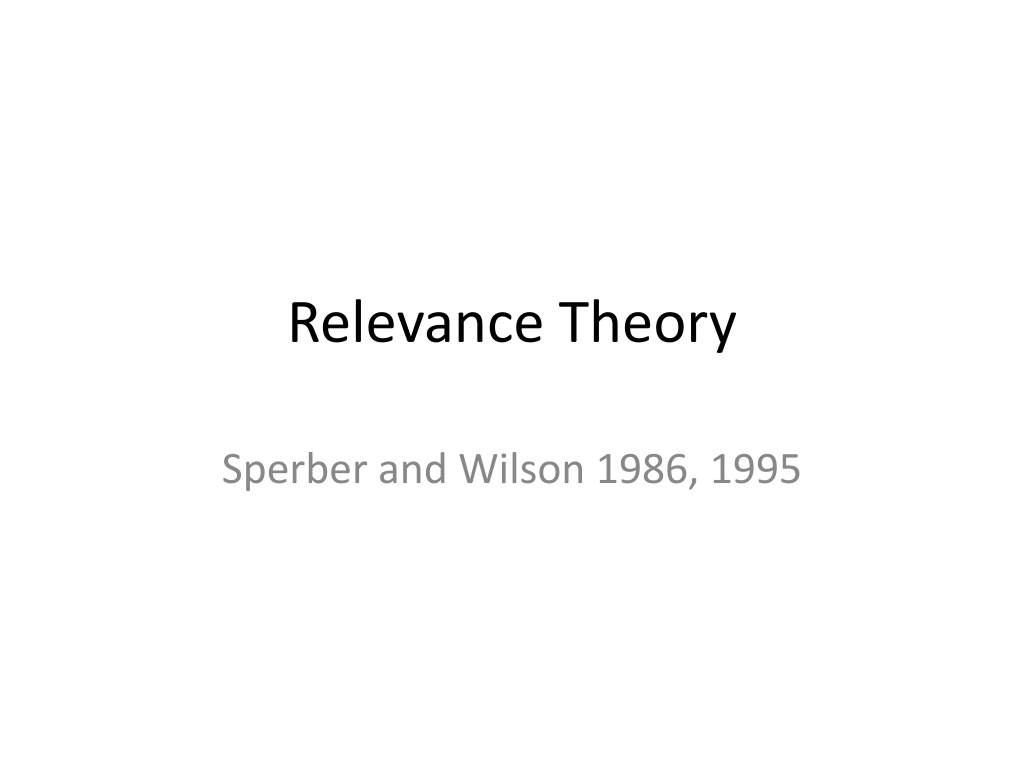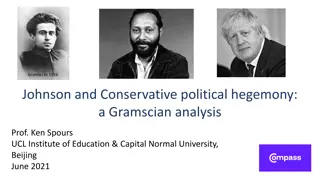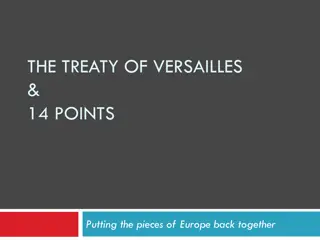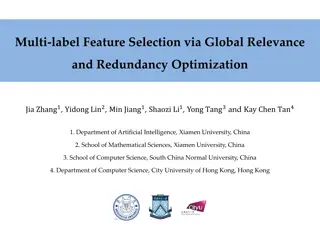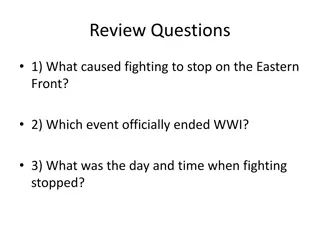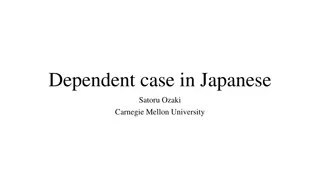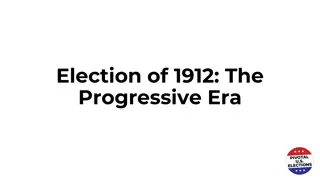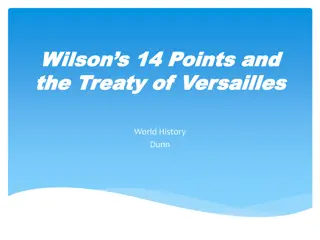Understanding Relevance Theory: Sperber and Wilson's Approach
Relevance Theory, introduced by Sperber and Wilson in 1986, aims to explain how propositions are understood without relying on mutual knowledge. It addresses deixis, ellipsis, vagueness, and ambiguity while exploring implicatures and providing a general theory of communication beyond just verbal interactions. Shared knowledge plays a crucial role in interpreting communication, but common ground can evolve during conversations. The theory distinguishes between the code model and inferential model of communication, highlighting the interplay between encoding and decoding messages and providing evidence of intentions through ostensive behavior and inference.
Download Presentation

Please find below an Image/Link to download the presentation.
The content on the website is provided AS IS for your information and personal use only. It may not be sold, licensed, or shared on other websites without obtaining consent from the author. Download presentation by click this link. If you encounter any issues during the download, it is possible that the publisher has removed the file from their server.
E N D
Presentation Transcript
Relevance Theory Sperber and Wilson 1986, 1995
The goals of Relevance Theory To explain how a proposition is recovered (not relying on mutual knowledge) deixis, ellipsis, vagueness, ambiguity To explain how implicatures are recovered (unifying Grice s maxims) To provide a general theory of communication (not only verbal)
A reminder A: Do you want to go out? B: I ve had a busy day. It s very warm in here. - Turn the heating down. - It s not the right place for the cheese.
Mutual knowledge, common ground Shared knowledge provides a framework of interpretation in communication It can only work if it is certain, and the conversational partners know this.
Which films should Bob think Ann is referring to? On Wednesday morning Ann and Bob read the early edition of the newspaper, and they discuss the fact that it says that A Day at the Races is showing that night at the Roxy. When the late edition arrives, Bob reads the movie section, notes that the film has been corrected to Monkey Business, and circles it with his red pen. Later, Ann picks up the late edition, notes the correction, and recognises Bob s circle around it. She also realises that Bob has no way of knowing that she has seen the late edition. Later that day Ann sees Bob and asks, Have you seen the movie showing at the Roxy tonight? (Clark & Marshall 1981)
We change our common ground as the conversation goes along John was on his way to school. He was terribly worried about the math lesson. Last week, he had been unable to control the class. It was unfair of the teacher to leave him in charge. After all, it s not usually part of a caretaker s duties. (Stanford and Garrod 1981)
I am the Prime Ministers daughter. I have nothing against my FATHER, only against the PRIME MINISTER.
Ostensive-inferential communication Code model: we encode and decode messages. Inferential model: we provide evidence of our intentions (ostensive behaviour) and try to interpret the evidence provided by others (inference). The two models work together
Two elements of communication Informative intention: to inform the hearer of something Communicative intention: to show that we intend to inform the hearer of something
Prisoners A and B are at work in their quarry, each with a guard at his shoulder, when suddenly the attention of the guards is distracted. Both prisoners realise that they have a good chance of escaping, but only if they can co- ordinate their attack and overpower their guards simultaneously. Here, it is clear what information would be relevant: each wants to know hey the other will start the attack. Prisoner A suddenly whistles, the prisoners overpower their guards and escape. Again, there is no need for a re-existing code correlating a whistle with the information that now is the moment to attack. The information is obvious enough: it is the only information that A could conceivably have intended to make manifest in the circumstances. The whistle is not a conventional code but expresses the only relevant intention in this context.
How it works Informing: a fact, emotion, etc. becomes manifest to the hearer A fact is manifest to someone, If they can create a mental representation of it, And can accept it to be true (not necessarily consciously). A fact may be more or less manifest The cognitive environment of an individual is the set of facts manifest to them
Not mutual knowledge, but shared cognitive environment The speaker leads the dance based on what they believe to be manifest to every conversational partner. The hearer is expected to work . The result of communication: expansion of the shared cognitive environment
A cognitive phenomenon Our processing resources are finite Efficient information processing: maximum of knowledge (greatest cognitive effect), with a minimum of effort Maximum knowledge comes from relevant new information: new information that can be linked to existing knowledge
What is the information that produces the greatest cognitive effect? Relevance is a psychological concept: it s not a question of conscious decision, we cannot help but process only relevant information. The greater the cognitive effect of processing, the greater the relevance The greater the effort involved in processing, the smaller its relevance. Both speaker and hearer aim to optimise relevance
Explicature the inferential process of selecting one of all possible semantic representations of an utterance and enriching it to recover a unique propositional form. Referent assignment, resolving ambiguity, enriching vague expressions
The hearer tries to recover the most relevant proposition. Inference proceeds step by step as the utterance is processed At every step, the hearer chooses the interpretation that requires the least effort The decision is revised if not enough cognitive effect has been achieved.
Natasha has just made dinner. Felix is writing a letter. Natasha: It ll get cold Explicature What will get cold? When in the future? What does cold mean? Implicature: What is Natasha trying to say?
The cognitive effort can be measured Cathy felt very dizzy and fainted at her work. She was carried unconscious to a hospital. Cathy worked very hard and became exhausted. She was carried unconscious to a hospital. Cathy had begun working on the new project. She was carried unconscious to a hospital. (Myers, Shinjo and Duffy 1987, increasing reading time)
The speaker does not necessarily help the hearer We got some beer out of the trunk. We checked the picnic supplies. The beer was warm. Haviland and Clark 1974, increasing reading time)
Relevant information is processed automatically Two boys play hooky from school. They go to the home of one of the boys because his mother is never there on a Thursday. The family is well off. They have a fine old home which is set back from the road and which has attractive grounds. But since it is an old house, it has some defects; for example, it has a leaky roof and a damp and musty cellar. Because the family is wealthy, they have a lot of valuable possessions such as a ten-speed bike, a colour television and a rare coin collection. (Anderson and Pichert 1978)
Irrelevant information is ignored A plane crashed on the border between America and Canada. Where do you think the survivors were buried? How many animals of each kind did Moses lead into the ark? (Erickson and Mattson, 1981; Barton and Sanford, 1993)
Scalar inference: Gricean account pre-existing linguistic scales of a set of expressions ranked by order of informativeness (Horn) some > many > most > all or > and these scalar implicatures are automatically activated every time a weaker term is heard (Levinson 2000) to access the semantic meaning, the implicature needs to be cancelled
Scalar inference: Relevance Theory both the semantic meaning and the pragmatic meaning of the weak terms are accessible the context decides which will be activated the semantic meaning is the default, the pragmatic inference is costly (not automatic)
Evidence: children Children are less likely than adults to reject underinformative statements (Some elephants have trunks) (Noveck 2001) They are also less likely to modify scenes to match the pragmatic meaning (I would like some boxes to contain a token) (Pouscoulous et al 2007)
Pouscoulous et al 2007 LR: Logical Response
Counterevidence but children and adults show the same behaviour if three levels of response are allowed: not so good, good, best (Katsos & Bishop 2011)
Katsos & Bishop 2011 Strawberries for Mr Caveman: small, medium or large The mouse wants to pick up vegetables. There are pumpkins and carrots. This is what happened. Mr Caveman says, The mouse picked up some of the carrots.
Evidence: adults Sentence verification task: Some cats are mammals. (Bott & Noveck 2004) response time limited to 3000 ms or 900 ms with short response time, people are more likely to accept underinformative statements (-> they have no time to process the implicature) Sentence verification task: Some oaks are trees. (De Neys & Schaeken 2007) secondary task: memorise dot patterns under increased cognitive load, people are more likely to accept underinformative statements
De Neys & Schaeken 2007 Sentence verification: Some oaks are trees. Subsidiary task: Dot pattern shown for 850 ms, participants had to reproduce it later Load trials Control trials
self-paced reading task: pragmatic meaning takes longer to process (Breheny et al 2006) John heard that / the textbook for Geophysics / was very advanced. / Nobody understood it properly. / He heard that / if he wanted to pass the course / he should read / the class notes or the summary. John was taking a university course / and working at the same time. / For the exams / he had to study / from short and comprehensive sources. / Depending on the course, / he decided to read / the class notes or the summary.
Definite reference is common ground all that is needed to resolve reference?
For common ground two people have to organise identically their sets of pictures just by talking (Brennan & Clark 1998) if the pictures are of different categories of objects, they use basic-level words (the dog, the chair) when a second set of pictures is introduced with similar objects, people modify their terminology (the small Spaniel, the green armchair) when the first set of pictures is removed, people continue to use the more specific terms ( established common ground, the co-operative principle?)
Against automatic common ground eye tracking study: Pick up the small candle. addressee first looks at the smaller candle, even though it cannot be seen by the speaker (Keysar et al 2000, 2003)
For online access to common ground Eye Tracking: Pick up the empty martini glass. People fixate on the right object when they hear empty . common ground is established online (that the definite article + empty must refer to the glass because only one is empty) (Hanna et al 2003)
Speaker effect Grodner and Sedivy (2011) eye tracking Sentence stimuli: Pick up the tall cup. (scalar) Pick up the glass cup. (non-scalar) Pictures Target, competitor, distractor and contrast or no contrast Adjective is overinformative in no-contrast condition Language-impaired, unreliable speaker Reliable speaker
